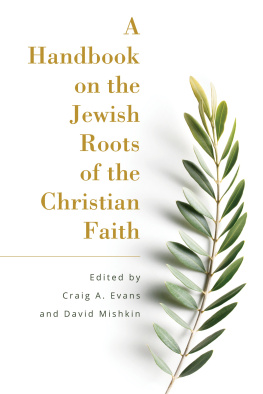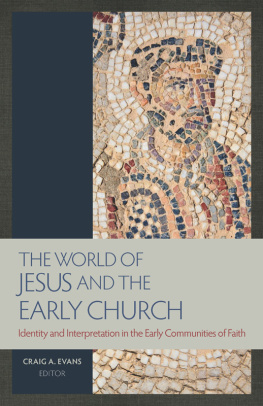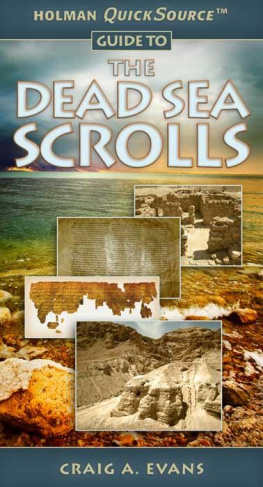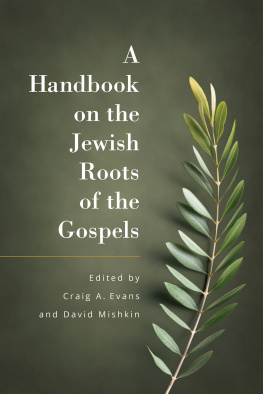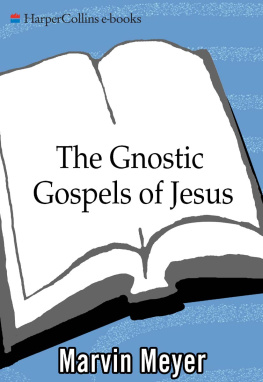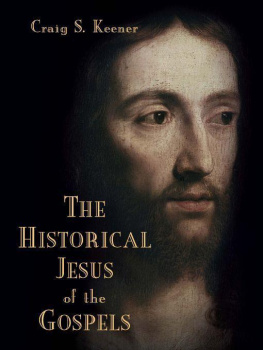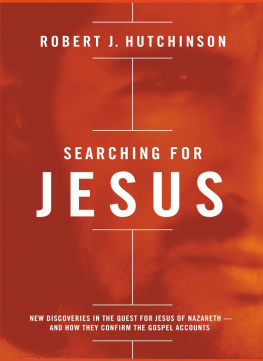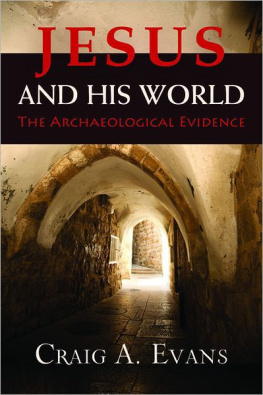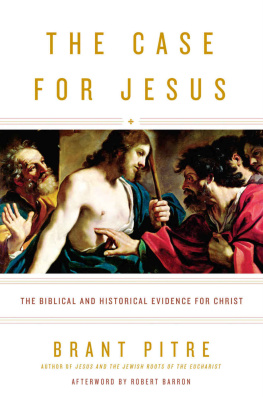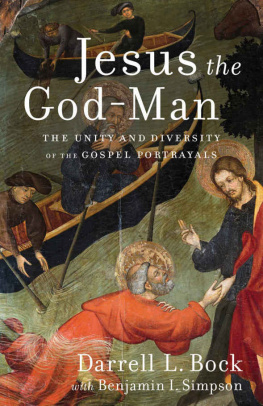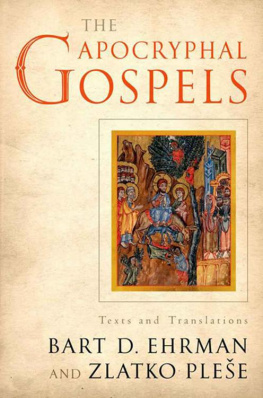2020 by Craig A. Evans
All rights reserved. No part of this book may be reproduced or transmitted in any form or by any means, electronic or mechanical, including photocopying, recording, or by any information storage and retrieval system, without permission in writing from the publisher.
Scripture quotations marked RSV are taken from the Revised Standard Version of the Bible, copyright 1952 [2nd edition, 1971] by the Division of Christian Education of the National Council of the Churches of Christ in the United States of America. Used by permission. All rights reserved.
Scripture quotations marked RSVA are taken from the Revised Standard Version of the Bible, Apocrypha, copyright 1957; The Third and Fourth Books of the Maccabees and Psalm 151, copyright 1977 by the Division of Christian Education of the National Council of the Churches of Christ in the United States of America. Used by permission. All rights reserved.
Due to technical issues, this ebook may not contain all of the images or diagrams in the original print edition of the work. In addition, adapting the print edition to the ebook format may require some other layout and feature changes to be made.
Cover image: A folio from 45 (CBL BP I f.7) depicting Mark 9. Used with permission of the Chester Beatty, Dublin. Photo: Brian Russell.
Cover design by Karol Bailey.
In memory of Rebecca Jane Evans (18391915), matriarch

List of Figures
1.1 Codex Vaticanus
1.2 Codex Vaticanus
1.3 Codex Vaticanus
1.4 Codex Ephraemi syri rescriptus
1.5 Codex Bezae (Luke 6)
1.6
1.7
1.8
1.9
1.10
1.11
1.12
1.13
1.14
2.1 Grenfell and Hunt at Oxyrhynchus
2.2 Grenfell and Hunt digging at Oxyrhynchus
2.3 The Tesoro Letter of Herculaneum
2.4 Herculaneum Papyrus 1425 facsimile
2.5 Public wharfs at Herculaneum
3.1 Shem Tovs Hebrew Matthew
3.2 Syriac Sinaiticus Matthew
3.3 Syriac Sinaiticus John
4.1 Greek fragment of the Gospel of Thomas
4.2 First page of Coptic Gospel of Thomas
5.1 Page of Arabic Diatessaron
5.2 Codex Fuldensis 296297
5.3 Syriac Bible Paris ms
6.1 Leaf of the Akhmm Codex, Gospel of Peter
6.2 Acts of Pilate / Gospel of Nicodemus
7.1 Gospel of Judas
8.1 Mar Saba Clementine letter
8.2 Gospel of Mary
8.3 Gospel of Jesus Wife
9.1 Jesus in the Infancy Gospel
9.2 Infancy Gospel of James
9.3 Miracles of Mary
9.4 A fragment of the Toledot Yeshu
9.5 Jesus in the Qurn
10.1 Pibechis Charm
10.2 Magic charm with the Lords Prayer
10.3 Apocryphal exorcism text
10.4 P.Oxy. 840, Jesus in the temple precincts
10.5 P.Egerton 2
10.6 Magicians Cup
10.7 James Ossuary
10.8 Magic bowl with pseudoscript
11.1 Cairo Hebrew Exodus Scroll
11.2 Kennicott Bible
11.3 London Polyglot
12.1 Novum Instrumentum omne (1516)
12.2 Novum Instrumentum omne, Matthews incipit
12.3 Novum Testamentum omne (1519)
12.4 Novum Testamentum omne, Marks incipit
12.5 Novum Testamentum omne (1519) with error
12.6 Novum Testamentum omne (1522)
12.7 Martin Luthers Das Neue Testament (1524)
12.8 Martin Luthers Das Neue Testament, Matthews incipit
12.9 Bishops Bible (1568)
12.10 Bishops Bible, Matthews incipit
12.11 The Newe Testament of the Holy Bible of 1611
12.12 Incipit of the Gospel of Luke in the Holy Bible of 1611
12.13 The New Testament in the Original Greek (1881)

Foreword
Many years ago, when the British New Testament text critic Neville Birdsall of Birmingham was being introduced to a new colleague, the latter said to him that text critics were like the men who rodded drains to unblock sewers. Later the colleague declared that, although he was glad someone else did such tasks, he himself did not choose to undertake labor of that sort; he preferred to be an exegete. In contrast to this colleagues views, the book before us aimsand succeeds magnificentlyin showing us how fundamental textual criticism ought to be in any theological and exegetical work on our New Testament Gospel texts.
Textual criticism is often referred to as lower criticism, contrasted with the higher criticism that seems to refer to critical exegesis and interpretation. But lower should never be thought of as inferior in any sense, and especially not scholastically. It is essential preparatory work on all literature composed prior to the invention of printing. None of this literature has survived in the actual handwriting of its original authors. That applies to biblical as well as to secular writings. We all have to work back to a supposed original by making use of copies of copies of copies, made in general by professional scribes, whose task it was to reproduce accurately from an exemplar a fine new readable copy; in reality, however, such scribes were essentially hack copyists who performed piecework and were paid by the number of lines they transcribed per diem.
Like Birdsalls erstwhile colleague, few academics nowadays are prepared to rod drains by devoting their research time to an analysis of extant manuscript witnesses, collating and then comparing newly emerging copies, thereby displaying all the necessary linguistic skills needed, with the willingness to look at what are often deemed minutiae and, of course, with the requisite Sitzfleisch such work always involves. But there is a sufficient number of scholars who do voluntarily devote themselves to such fundamental tasks. Most of these academics claim to be eclectic in their approach; that is, most of them feel free to select the text to be printed from a small range of extant witnesses. Only a few, usually nowadays to be found in the United States, remain fond of and wedded to the medieval bulk of manuscripts, often labeled the Byzantine text-type, insofar as such adherence to the readings of the majority of New Testament manuscripts sounds very democratic. (When I visited an extremely conservative seminary in North Carolina to lecture there, I was surprised to see in its parking lot bumper stickers that told me that the King James Version is the only true English-language translation of the Old and New Testament text: If it aint the KJV it aint the Bible.)
By contrast to most eclectic text critics, and certainly to those who favor one text-type as the bearer of the original texts, my work has regularly been dubbed thoroughgoing text criticism, by which term is meant that I seek the original wording in as many or as few manuscripts of any date, as long as one disputed reading agrees with the language, style, and theology of the author. Other text critics still favor the cult of the best manuscripts rather in the way that Westcott and Hort had done in the nineteenth century; and I see here that Professor Craig Evans can still speak of the oldest and best manuscripts. I often still argue that our modern critical hand-editions, such as Nestle-Aland, Novum Testamentum Graece, and the United Bible Societies Greek New Testament are favorably disposed to such a cult.


